Cellular Interrogation: Exploiting Cell-to-Cell Variability to Discriminate Regulatory Mechanisms in Oscillatory Signalling
- PMID: 27367445
- PMCID: PMC4930170
- DOI: 10.1371/journal.pcbi.1004995
Cellular Interrogation: Exploiting Cell-to-Cell Variability to Discriminate Regulatory Mechanisms in Oscillatory Signalling
Abstract
The molecular complexity within a cell may be seen as an evolutionary response to the external complexity of the cell's environment. This suggests that the external environment may be harnessed to interrogate the cell's internal molecular architecture. Cells, however, are not only nonlinear and non-stationary, but also exhibit heterogeneous responses within a clonal, isogenic population. In effect, each cell undertakes its own experiment. Here, we develop a method of cellular interrogation using programmable microfluidic devices which exploits the additional information present in cell-to-cell variation, without requiring model parameters to be fitted to data. We focussed on Ca2+ signalling in response to hormone stimulation, which exhibits oscillatory spiking in many cell types and chose eight models of Ca2+ signalling networks which exhibit similar behaviour in simulation. We developed a nonlinear frequency analysis for non-stationary responses, which could classify models into groups under parameter variation, but found that this question alone was unable to distinguish critical feedback loops. We further developed a nonlinear amplitude analysis and found that the combination of both questions ruled out six of the models as inconsistent with the experimentally-observed dynamics and heterogeneity. The two models that survived the double interrogation were mathematically different but schematically identical and yielded the same unexpected predictions that we confirmed experimentally. Further analysis showed that subtle mathematical details can markedly influence non-stationary responses under parameter variation, emphasising the difficulty of finding a "correct" model. By developing questions for the pathway being studied, and designing more versatile microfluidics, cellular interrogation holds promise as a systematic strategy that can complement direct intervention by genetics or pharmacology.
Conflict of interest statement
The authors have declared that no competing interests exist.
Figures


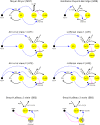


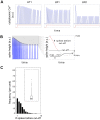
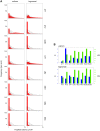

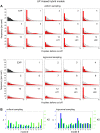
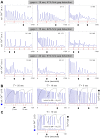
Similar articles
-
Cellular signaling identifiability analysis: a case study.J Theor Biol. 2010 May 21;264(2):528-37. doi: 10.1016/j.jtbi.2010.02.029. Epub 2010 Feb 24. J Theor Biol. 2010. PMID: 20188743
-
Equality of average and steady-state levels in some nonlinear models of biological oscillations.Theory Biosci. 2008 Mar;127(1):1-14. doi: 10.1007/s12064-007-0018-4. Epub 2008 Jan 15. Theory Biosci. 2008. PMID: 18197448
-
A computational analysis of localized Ca2+-dynamics generated by heterogeneous release sites.Bull Math Biol. 2009 Oct;71(7):1543-79. doi: 10.1007/s11538-009-9413-y. Epub 2009 May 14. Bull Math Biol. 2009. PMID: 19440797
-
Reconstruction of cellular signalling networks and analysis of their properties.Nat Rev Mol Cell Biol. 2005 Feb;6(2):99-111. doi: 10.1038/nrm1570. Nat Rev Mol Cell Biol. 2005. PMID: 15654321 Review.
-
In silico biology: from simulation to understanding.Curr Biol. 2007 Feb 20;17(4):R132-4. doi: 10.1016/j.cub.2006.12.034. Curr Biol. 2007. PMID: 17307047 Review.
Cited by
-
A simple mechanochemical model for calcium signalling in embryonic epithelial cells.J Math Biol. 2019 Jun;78(7):2059-2092. doi: 10.1007/s00285-019-01333-8. Epub 2019 Mar 2. J Math Biol. 2019. PMID: 30826846 Free PMC article.
-
A mathematical model of calcium signals around laser-induced epithelial wounds.Mol Biol Cell. 2023 May 15;34(6):ar49. doi: 10.1091/mbc.E22-08-0361. Epub 2022 Nov 2. Mol Biol Cell. 2023. PMID: 36322412 Free PMC article.
-
Emergence of activation or repression in transcriptional control under a fixed molecular context.bioRxiv [Preprint]. 2024 Jun 2:2024.05.29.596388. doi: 10.1101/2024.05.29.596388. bioRxiv. 2024. PMID: 38854049 Free PMC article. Preprint.
-
A molecular systems perspective on calcium oscillations beyond ion fluxes.Curr Opin Cell Biol. 2025 Jun;94:102523. doi: 10.1016/j.ceb.2025.102523. Epub 2025 Apr 30. Curr Opin Cell Biol. 2025. PMID: 40311263 Review.
-
Understanding Epileptiform After-Discharges as Rhythmic Oscillatory Transients.Front Comput Neurosci. 2017 Apr 18;11:25. doi: 10.3389/fncom.2017.00025. eCollection 2017. Front Comput Neurosci. 2017. PMID: 28458634 Free PMC article.
References
Publication types
MeSH terms
LinkOut - more resources
Full Text Sources
Other Literature Sources
Miscellaneous

